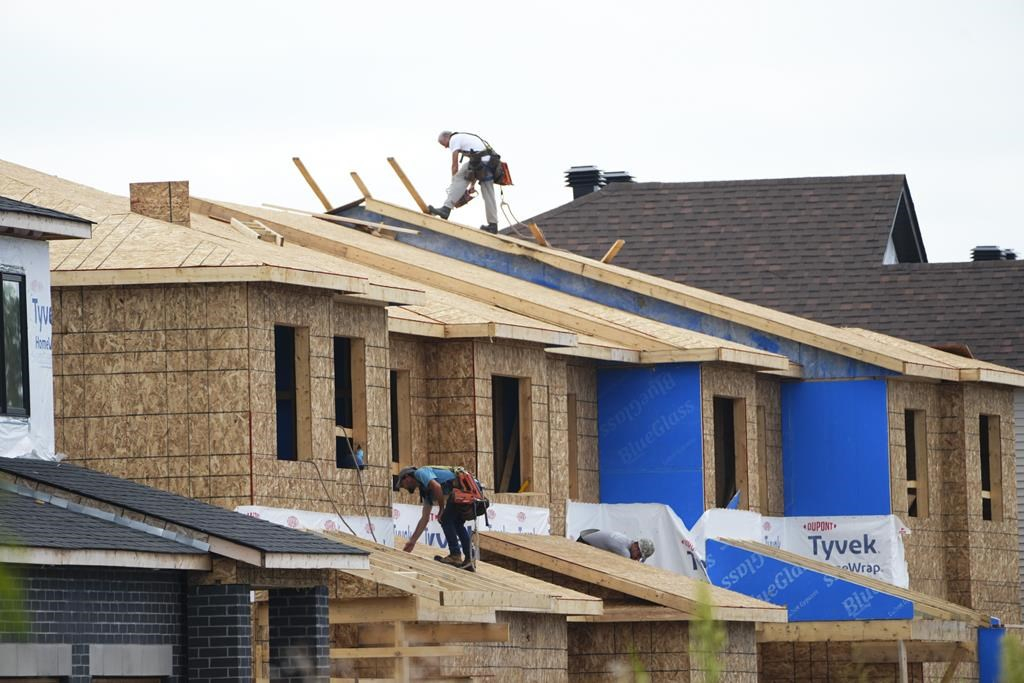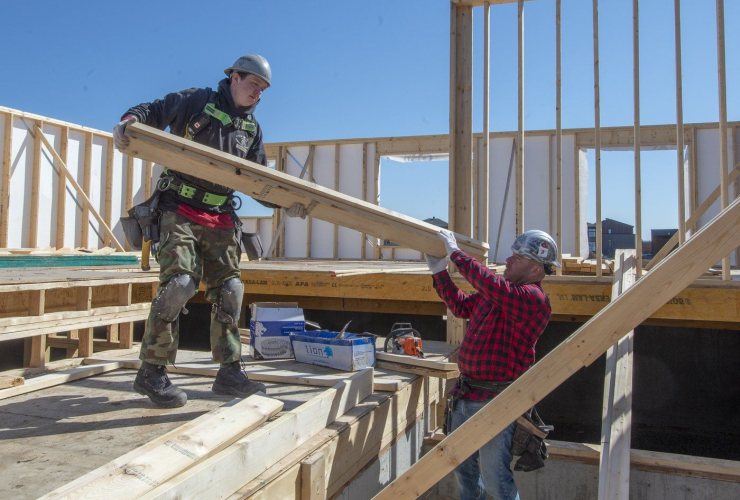OTTAWA — The federal government intends to resurrect a post-war effort to ramp up housing construction across Canada — but with a 21st-century twist.
A consultation process will begin next month on developing a catalogue of pre-approved home designs to accelerate the homebuilding process for developers, Housing Minister Sean Fraser said Tuesday.
It's a reboot of a federal policy from the post-Second World War era when the Canada Mortgage and Housing Corp. developed straightforward blueprints to help speed up the construction of badly needed homes, Fraser said.
"When many thousands of soldiers were returning home to be reunited with their families at once, Canada faced enormous housing crunches," he said.
"We intend to take these lessons from our history books and bring them into the 21st century."
Many of the postwar home designs — including those for modest detached homes known as strawberry box houses — are still scattered in neighbourhoods across the country to this day.
The modern-day version of the catalogue will instead focus on low-rise builds, such as small multiplexes, student housing and seniors' residences, then explore a potential catalogue for higher-density construction.
The goal is to better ensure housing builds can be fast-tracked for approval from the CMHC and others, while also promoting larger-scale production through factory-based construction.
"I have seen estimates from experts in the field indicating this could cut up to one year off the time for construction on a project," Fraser said.
The government is aiming to have the catalogue ready sometime next year.
Fraser said it will go hand-in-hand with the national building code. The code, which the minister said the government is planning to update, offers guidelines that are only enforceable if a province or territory chooses to adopt them.
The idea of a catalogue of pre-approved blueprints was also one of several recommendations in a report co-authored by housing expert Mike Moffatt that was released earlier this year called the National Housing Accord.
"This is potentially very transformative," Moffatt said in an interview.
Creating a catalogue will help get shovels into the ground faster by speeding up the process of approval for everything from financing to municipal permitting, he said.
Moffatt, who is a senior director of policy and innovation at the Smart Prosperity Institute, has become an influential figure on housing policy in the country. After publishing his report this summer, Moffatt attended the Liberals' cabinet retreat to talk about housing.
On the catalogue, Moffatt added the blueprints also have the potential to boost productivity.
"One of the big challenges we're going to have building enough homes is having enough skilled labour. And certainly, we need to increase the number of tradespeople we have. But we also need to find ways to be more productive. And this would help get us there," Moffatt said.
The federal government has so far moved forward with several recommendations in the accord that Moffatt and other stakeholders put together.
"We made sure that we brought together builders and developers in the real estate industry, along with academics, but also with the not-for-profit side," Moffatt said.
"Because we essentially (locked) everyone into a room for a day and tried to figure out what we can all agree on, that, I think, gives these recommendations credibility."
This report by The Canadian Press was first published Dec. 12, 2023.
Not a bad idea, but (like
Not a bad idea, but (like most of what the Liberals do) it doesn't in itself result in homes being built. They should take these blueprints and BUILD THEM. Which, postwar, governments did. I think not actually building the homes is the "modern twist".
Well, at least somebody in
Well, at least somebody in Ottawa is using our history for some solutions. At the time these "wartime" houses were designed with specifications that took into account Canadian climate issues and advanced the development of Canadian building standards and technology. Similar goals should be applied today: climate resilient standards and green technology are a must. Heat pumps! Superior anchoring to resist wind storm, damage, Elevation/water resistance to combat flooding, Capability for zone geothermal heating., Accessibility provisions - especially for seniors and disabled housing. Canadian designers and builders can do it!





Comments